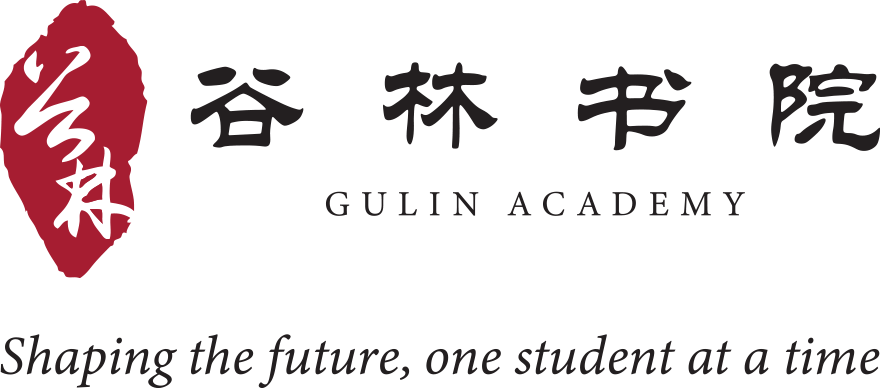谷林书院解说:美国与英国高等教育对比分析:选择性优势与雇主偏好深度洞察
背景
随着国际教育需求的增长,中国学生对美国和英国高等教育机构的青睐显著增加。两国高校虽然都拥有世界顶尖的学术资源和声望,但其吸引力、录取难度和毕业生的雇主认可度在多个方面存在明显差异。对中国学生而言,这种差异不仅影响了他们的申请策略,也在某种程度上决定了未来职业发展的轨迹。
美国高等教育:选择性与声望并重
美国大学在全球范围内以高选择性和学术声誉著称,尤其是顶尖学府。在2024年申请季,哈佛大学仅录取了24名中国学生,录取率不到4%。其他常春藤盟校的数据同样稀少,如普林斯顿大学录取23人,耶鲁大学录取25人,而哥伦比亚大学仅录取了15人。这种严格筛选机制强化了美国高校的精英化定位,也为其毕业生的职业发展提供了独特优势。
在理工科领域,这种选择性进一步凸显。例如,麻省理工学院(MIT)2024年录取了4名中国学生,而斯坦福大学录取了24人。这不仅反映了美国高校对学术能力的严苛要求,也体现了其在前沿科技领域的全球领导地位。
此外,美国大学注重多元化的生源结构,通过吸引来自世界各地的学生,创造了多样化的课堂环境。这种多元文化背景的碰撞,不仅使学生在全球化职场中更具竞争力,还提升了学校在全球范围内的声望。
英国高等教育:开放性与挑战并存
相比之下,英国大学近年来对国际学生展现出更高的开放性。2023年,牛津大学录取了154名中国学生,而剑桥大学录取了255人。根据2025年申请季的非官方统计,牛津大学的中国学生录取率再创新高,达到了179人。这些数据表明,英国高校在录取政策上相对宽松,尤其是在国际学费的驱动下,更多中国学生得以进入罗素集团大学。
然而,这种国际化的开放性也带来了一些潜在挑战。以伦敦大学学院(UCL)为例,其中国学生人数在2024年达到13,975人,成为英国高校中最多的。而曼彻斯特大学和爱丁堡大学也录取了大量中国学生,分别为9,085人和2,578人。一些教授和学生反映,由于国际学生比例过高,课堂文化的单一化现象日益显著。例如,一位南安普顿大学的学生提到,他所在的研讨课几乎全是中国同学,缺乏跨文化的交流。
对比分析:美国与英国高等教育的竞争优势
- 录取标准与选择性
美国大学以其严格的录取标准和全面的招生考核体系著称。例如,2024年,哈佛大学仅录取了24名中国学生,录取率不足4%。普林斯顿、耶鲁、哥伦比亚等常春藤盟校同样维持着极低的录取比例,录取人数分别为23、25和15人。理工科领域竞争尤为激烈,麻省理工学院(MIT)仅录取4名中国学生,斯坦福大学录取24人。这种选择性不仅体现了美国高等教育的精英化,也强化了其学位的市场认可度与稀缺性。
相比之下,英国高校对国际学生,尤其是中国学生的录取政策显得更加宽松。2023年,剑桥大学录取了255名中国学生,是哈佛同期录取人数的十倍。此外,牛津大学当年录取了154名中国学生。其他学校如帝国理工学院录取了1,300人,伦敦大学学院(UCL)录取246人,曼彻斯特大学和爱丁堡大学分别录取了1,623人和2,578人。这种高录取比例一方面满足了国际教育市场的需求,但也引发了对学位含金量和竞争力下降的担忧。
2024年入学周期数据显示,英国大学通过UCAS系统录取了14,890名中国学生,占非欧盟国际学生总人数的29.4%。中国仍是英国国际学生的最大来源国,申请数量在过去十年间几乎增长了三倍,显示了中国对英国高等教育的持续需求。
- 学术资源与行业对接
美国高校以强大的学术资源和与行业紧密的合作关系闻名。例如,麻省理工学院的计算机科学与人工智能实验室(CSAIL)和斯坦福大学的人工智能研究中心,推动了全球范围内人工智能领域的技术突破。此外,斯坦福与硅谷企业的紧密联系使其学生能够直接进入尖端行业工作,推动了自动驾驶、精准医疗、金融科技等领域的发展。
在英国,牛津大学和剑桥大学等高校在传统学科如文学、法律和经济学领域保持着领先地位,但与新兴行业的结合相对薄弱。尽管伦敦帝国理工学院在工程和自然科学领域有突出表现,但整体产业转化能力和资源整合水平仍逊于美国。
- 教育环境与文化多样性
美国高校注重生源多样性,以打造具有全球视野的教育环境。例如,根据美国国际教育研究所(IIE)统计,2024年美国高校国际学生总数超过110万,占学生总数的5.5%-6%。美国高校通过严格控制单一国家的学生比例,确保课堂讨论中融入多元化的文化和观点。这种环境帮助学生培养跨文化合作和创新能力,广受全球雇主青睐。
相较之下,英国高校国际学生中的中国学生占比相对较高。例如,伦敦大学学院(UCL)的中国学生人数已达13,975人,占国际学生总数的30%以上。南安普顿大学的国际学生中有68.7%来自中国。这种高度集中虽然显示了中国学生对英国教育的强烈需求,但也导致了课堂文化单一化的问题。一位UCL教授指出,过于集中的国际生源让课程设计更倾向于满足某一群体的需求,限制了全球化视角的融入。
- 毕业生职业前景与校友网络
在中国竞争激烈的就业市场中,美国高校毕业生更受顶尖雇主青睐。例如,高盛、麦肯锡等公司更倾向于招聘哈佛、MIT、斯坦福等校的毕业生,因为他们在创新能力、解决问题能力和领导潜力方面表现突出。美国高校强大的全球校友网络和与行业的深度合作,为学生提供了更多的实习和就业机会。
英国高校的毕业生在传统领域如法律和经济学方面仍具备竞争力,但在新兴行业如人工智能、金融科技和生物技术等领域的影响力逐渐落后于美国。此外,英国高校的国际校友网络覆盖面相对较小,职业发展支持力度不足,也在一定程度上影响了毕业生的市场竞争力。
- 专业发展与未来趋势
美国在人工智能(AI)、量子计算和清洁能源等领域的快速发展使其高校成为全球创新中心。例如,卡内基梅隆大学的机器人学院和斯坦福大学的AI研究中心,已成为全球研究前沿的重要力量。这些高校通过跨学科融合,不仅推动了前沿科技的发展,也实现了其在医疗、交通、教育等多个行业的广泛应用。
英国高校尽管在部分研究领域表现出色,但在研究成果的产业转化和高科技领域的扩展能力上,仍难以匹敌美国。例如,美国高校的科研经费总量远高于英国,尤其在人工智能等领域的投入更是数倍于英国。这种投入差距进一步强化了两国高校在专业发展上的差异。
全球雇主对美国与英国大学毕业生的偏好
- 美国大学的雇主认可度
美国高校的毕业生因其创新能力、全球视野和综合素质,在高端行业中备受青睐。尤其是常春藤盟校及顶尖公立大学的学位被视为高水平教育的象征。例如:在咨询和金融领域,如麦肯锡、波士顿咨询(BCG)和高盛,美国高校毕业生更具竞争力。麦肯锡的一项内部报告显示,其全球新聘员工中,超过40%拥有美国顶尖高校学位。科技行业对美国大学毕业生的需求也非常旺盛。硅谷企业如谷歌、Meta、苹果和特斯拉,更倾向于录用来自斯坦福、麻省理工学院(MIT)和加州大学系统的学生,这些学校的课程与行业发展紧密结合,毕业生能够快速适应工作需求。
- 英国大学的雇主认可度
英国高校在传统领域依然保持着较高声誉。以下是一些优势领域:在法律和经济学领域,牛津、剑桥和伦敦政治经济学院(LSE)的毕业生被认为具备扎实的理论功底。英国的法律、国际关系和公共政策课程也为学生提供了全球化的视野。伦敦金融城内的银行与金融机构对英国高校毕业生(特别是LSE和帝国理工学院)仍有较高的招聘倾向,但这种偏好更多集中于欧洲市场,在全球范围内的认可度略逊于美国顶尖大学。
- 中美雇主对美国与英国大学的态度差异
在中国的顶尖企业中,美国大学的毕业生拥有更明显的竞争优势。2025年的一项调查显示,腾讯、阿里巴巴、字节跳动等科技企业更倾向于录用哈佛、MIT和斯坦福等校的毕业生,对于技术能力与创新精神来说,美国高校的工程与计算机科学课程侧重于实际应用,培养了学生解决复杂问题的能力。全球的校友资源,美国高校的校友网络在中国市场具有强大的影响力,通过推荐机制增强了毕业生的雇主认可度。
相比之下,英国高校毕业生更适合在传统领域如法律和咨询行业发展。在中资企业中,牛津和剑桥的学位仍具备一定的象征意义,但整体竞争力与美国顶尖大学存在差距。
- 美国学位在未来职业发展的溢出效应
美国高校的校友网络和全球化影响力在职业生涯的长期发展中也占据优势。例如:哈佛、斯坦福和芝加哥大学的校友会活动不仅为毕业生提供了资源共享的机会,还能帮助他们拓展高层次的职业路径。美国高校与企业的深度合作,例如斯坦福大学的创业文化,让学生能够直接参与初创企业或高增长行业,长期保持竞争力。
- 雇主对专业领域的细分偏好
在人工智能和大数据领域,美国高校(尤其是MIT、CMU和加州大学伯克利分校)培养的学生拥有更强
的实践能力,许多毕业生已成为行业领军人物。英国高校的优势则集中于文学、历史和社会科学等学术
性较强的领域,但这些学科的职业溢出效应在科技驱动的时代相对有限。
结论:
美国和英国高等教育体系在录取标准、学术资源、文化多样性和职业发展等方面的差异,决定了它们在全球雇主眼中的竞争力以及对国际学生的吸引力。
美国的显著优势
美国高校,特别是常春藤盟校和顶尖公立大学,因其严格的录取标准、多元化的校园环境以及紧密的校企合作,能够提供无与伦比的职业发展机会。顶尖大学的毕业生在高端行业(如科技、咨询和金融)中尤其受到青睐,企业视其为创新能力和潜力的象征。美国高校的强大校友网络和在新兴领域(如人工智能、大数据和清洁能源)的引领地位,使其在全球范围内具有长期的职业溢出效应。
英国的核心竞争力
英国高校以学术严谨和传统学科的卓越表现为标志,尤其在法律、经济学和社会科学领域保持全球竞争力。然而,英国近年来在国际招生政策上的开放性,使其学位的市场竞争力受到一定挑战。尽管如此,英国高校的毕业生在传统行业(如法律和金融)中依然具有较高认可度,尤其是在欧洲和英联邦国家的市场中优势明显。
选择的关键考量
对于希望进入高度竞争行业、在前沿科技或全球顶级企业中脱颖而出的学生,美国大学因其教育资源、校友网络和行业连接,提供了更大的发展潜力。相比之下,英国高校的灵活录取政策和特定学科优势,使其适合希望在学术性较强的领域深造或在特定市场发展的学生。
建议:
选择留学目的地时,学生应综合考虑个人兴趣、职业目标以及行业需求。如果目标是进入全球顶尖行业并最大化职业潜力,美国大学的顶尖教育体系无疑是首选。而对于注重传统学术价值或有特定职业定位的学生,英国大学依然提供了具有吸引力的教育资源和机会。
谷林书院是你的良师益友
谷林书院致力于成为学生留学规划路上的良师益友。如果您在选择大学时感到迷茫,谷林书院的专家团队将为您提供专业的指导。我们结合丰富的经验和个性化的方法,根据您的学术兴趣、职业目标以及个人偏好,帮助您评估英、美各地高等教育机构的差异,并做出最适合的选择。
无论您倾向于学术研究氛围浓厚的研究型大学,还是注重个性化教育的小型文理学院,我们都将为您提供详细的分析和建议。此外,我们的团队不仅帮助您了解学校的基本信息,还会通过职业发展趋势和行业需求分析,助您选择与个人潜力和目标最契合的教育路径。
如果您需要更多支持或建议,欢迎联系谷林书院,开启迈向全球顶级学府的旅程。
A Comparative Analysis of U.S. and U.K. Higher Education: Employer Preferences and Admission Selectivity
United States admissions demonstrates continued prestige compared to UK institutions
The rise in Chinese students seeking international education has highlighted distinct contrasts in the appeal, exclusivity, and employer perception of degrees from U.S. and U.K. universities. While both countries host prestigious institutions, U.S. universities consistently outperform their U.K. counterparts in terms of selectivity and perceived value, especially for Chinese students aiming for competitive roles in global markets. Admission data reveals stark contrasts in selectivity. Harvard University, for example, accepted only 24 Chinese students in a recent admissions 2024 cycle, translating to an acceptance rate of under 4%. Similar trends are observed at other Ivy League schools, including Princeton (23 students according to 2023 statistics), Yale (25 students), and Columbia (15 students). Even among larger institutions like Cornell University, the number of Chinese students admitted (74) is relatively modest, underscoring the rigorous selection criteria. In STEM-focused universities, the competition is even fiercer. MIT admitted only 4 Chinese students, while Stanford University accepted 24. These figures reflect the high premium placed on selectivity, a hallmark of U.S. higher education that bolsters its global reputation.
United Kingdom admissions become less competitive, especially for Chinese students
U.K. universities are significantly more accessible to Chinese students. Oxford and Cambridge, often considered the pinnacle of U.K. education, admitted 154 and 255 Chinese students, respectively. Beyond these elite institutions, the numbers are even more pronounced. Imperial College London accepted 1,300 Chinese students, while University College London (UCL) admitted 246. Notably, U.K. institutions like the University of Manchester (1,623 students), the University of Warwick (1,576 students), and the University of Edinburgh (2578 students in 2023) highlight the broader accessibility of higher education in the U.K. The most striking example is the London Arts University, which admitted over 4,000 Chinese students in 2024. Such trends raise questions about the impact of growing international student populations on the diversity and exclusivity of U.K. degrees.
The growing concentration of Chinese students at U.K. universities has reshaped classroom dynamics and the overall educational experience. At the University of Southampton, Chinese students account for 68.7% of the international student body, according to the Higher Education Statistics Agency (HESA). Similarly, Chinese students make up over 40% of the international populations at UCL, the University of Manchester, and the University of Birmingham. This overrepresentation has led to significant cultural homogenization. A UCL professor acknowledged the need to prepare bilingual lecture materials to accommodate classrooms dominated by Chinese students. Additionally, curricula are increasingly tailored to Chinese markets, potentially limiting exposure to global perspectives. One UCL student recounted a group project where an all-Chinese team failed to consider British consumer behavior, illustrating the challenges of cultural homogeneity.
By contrast, U.S. universities emphasize diversity in admissions, fostering classrooms with students from a mix of nationalities and cultural backgrounds. This diversity enriches discussions and promotes innovative problem-solving, a factor highly valued by global employers. The exclusivity is a defining feature of U.S. universities, enhancing the prestige and marketability of their degrees. Institutions like Princeton and Yale leverage vast endowments and influential alumni networks to provide unparalleled career opportunities for graduates. The holistic admissions process, which evaluates extracurricular achievements, leadership potential, and personal statements alongside academic performance, contributes to their global appeal.
United Kingdom institutions prioritize revenue generation, diminishing quality of degree
Furthermore, U.K. universities rely heavily on international tuition revenue, leading to a higher acceptance rate for Chinese students. For instance, Cambridge admitted 255 Chinese students compared to 24 at Harvard. Such figures reflect a fundamental difference in admissions philosophy and contribute to the perceived dilution of U.K. degrees in competitive markets. The overrepresentation of Chinese students in U.K. universities also raises concerns about homogenization in classroom dynamics. For instance, a student at Southampton recounted feeling like an exchange student in his own seminar group, where nearly all participants shared the same cultural background. Similarly, group projects at U.K. institutions often lack the diversity needed for meaningful cross-cultural learning. In one case at UCL, a professor criticized a group of Chinese students for failing to consider British consumer behavior in a marketing project, illustrating the pitfalls of cultural homogeneity.
According to data from the UK’s Higher Education Statistics Agency, the following 10 UK universities are especially welcoming to Chinese students, with University College London (UCL) leading the way with 13,975 Chinese students. The University of Manchester ranks second with 9,085 Chinese students. Other universities include the University of Glasgow, University of Southampton, and University of Edinburgh. Regarding the 2024 admissions cycle, UCAS data reveals that 14,890 Chinese students have been admitted to UK universities, accounting for 29.4% of all non-EU international students. China remains the largest source of international students in the UK, with applications nearly tripling over the past decade, signaling continued strong demand for British higher education.
Employers continue to value top US educations over UK degrees
Chinese employers, particularly in high-stakes industries like finance, consulting, and technology, prioritize degrees from elite U.S. institutions. A 2025 recruitment survey revealed that 70% of hiring managers at leading firms such as Tencent, Alibaba, McKinsey, and Goldman Sachs preferred candidates with degrees from U.S. Ivy League universities over those from U.K. Russell Group schools. In China’s competitive job market, universities like Harvard, MIT, and Stanford are classified as “第一档” (Tier 1), signifying unmatched prestige. Graduates from these institutions are often viewed as “学神” (academic prodigies), earning priority in recruitment pipelines. In contrast, many U.K. universities, even those in the prestigious Russell Group like Oxford, Cambridge, and UCL, are often seen as less competitive due to their increasing accessibility, reliance on international students, and perceptions of a less rigorous admissions process compared to top U.S. schools.
This preference for U.S. degrees extends beyond academics. U.S. universities boast strong global networks, with extensive alumni connections that play a crucial role in opening doors within leading Chinese firms. The branding of Ivy League schools and the selective nature of their admissions further elevate their status in China. On the other hand, while U.K. universities still enjoy recognition, especially in specific fields such as law, economics, and politics, they often rank lower in industries like finance and technology.
For example, in finance and consulting, U.S. Ivy League graduates are viewed as having superior problem-solving abilities and leadership potential, which aligns with the competitive demands of firms like Goldman Sachs and McKinsey. In comparison, while U.K. schools remain respected, they are increasingly seen as producing graduates with less specialized expertise in these high-demand sectors.
Conclusion
Despite these differences, both U.S. and U.K. institutions still provide strong opportunities. Tier 2 U.S. schools like Johns Hopkins, NYU, and the University of California series, as well as U.K. institutions such as Warwick, Durham, and Manchester, offer significant job prospects in China. These schools remain competitive but are typically more favored by mid-tier firms or industries where a broader range of academic backgrounds is acceptable. However, for those aiming for the highest echelons of Chinese business and tech, a degree from an elite U.S. university continues to carry a marked advantage.
The quantitative differences between U.S. and U.K. higher education systems underscore their diverging reputations. While U.K. universities remain academically rigorous, their increasing accessibility has raised concerns about the long-term value of their degrees. Conversely, U.S. universities maintain their global prestige through stringent admissions processes and an emphasis on diversity, making them the preferred choice for ambitious Chinese students aiming to excel in competitive industries. For students seeking to maximize their career prospects, the selectivity, resources, and robust alumni networks of U.S. institutions offer unparalleled advantages. As data suggests, the name on a diploma significantly influences career trajectories, particularly in sectors where academic pedigree serves as a proxy for talent and potential.
How Gulin Academy can help
If you’re feeling uncertain about which universities to apply to, consult us at Gulin Academy. With our deep expertise in guiding students through the college selection process, we offer personalized advice tailored to your academic interests, career goals, and personal preferences. Our team of counselors will help you navigate the diverse landscape of higher education institutions, ensuring you choose schools that align with your aspirations, values, and potential for success. Whether you’re drawn to the intellectual rigor of research universities or the personalized experience of liberal arts colleges, our comprehensive approach will provide the clarity and support you need to make informed decisions. Let us help you unlock your future by finding the right fit among Massachusetts’ top-tier institutions.


